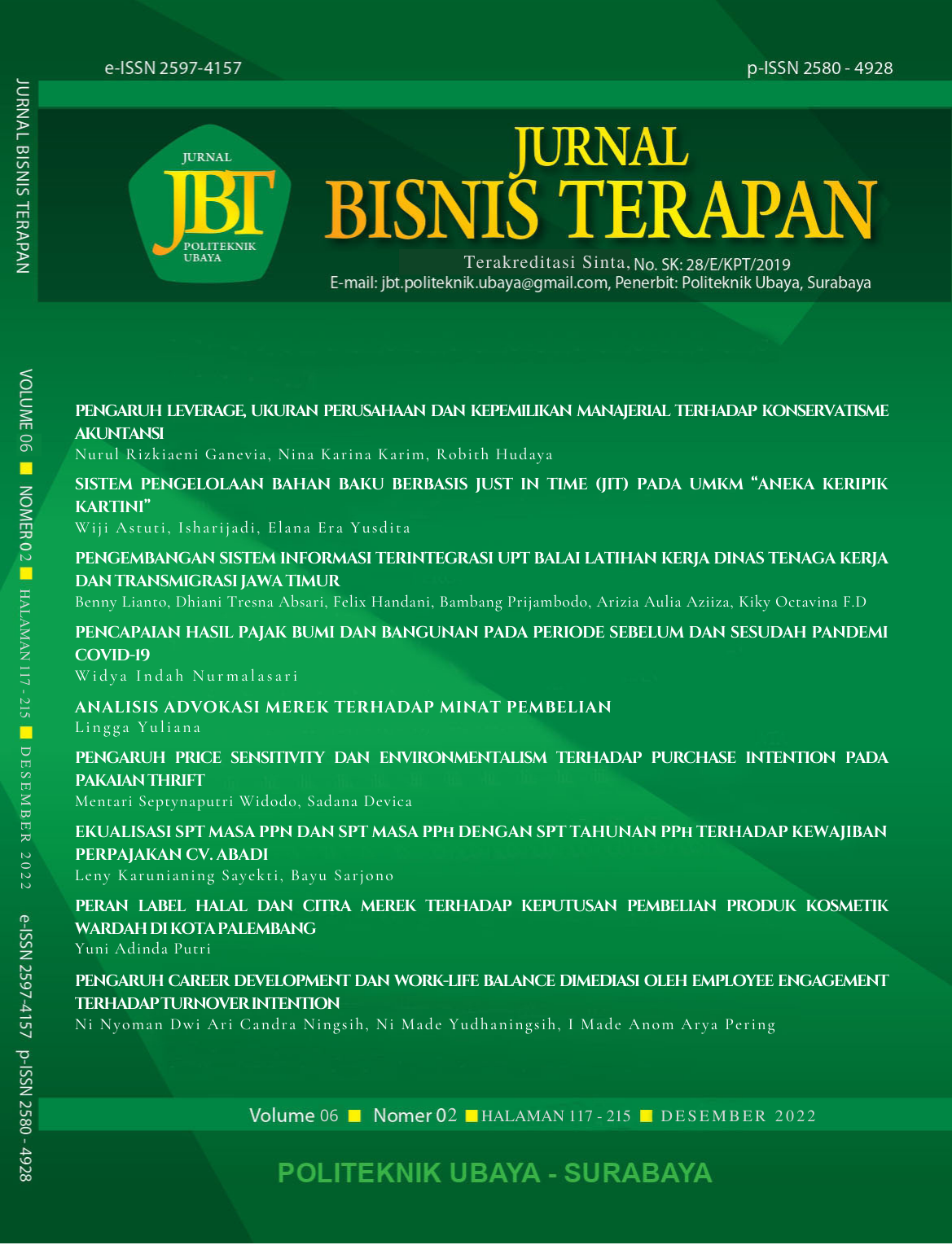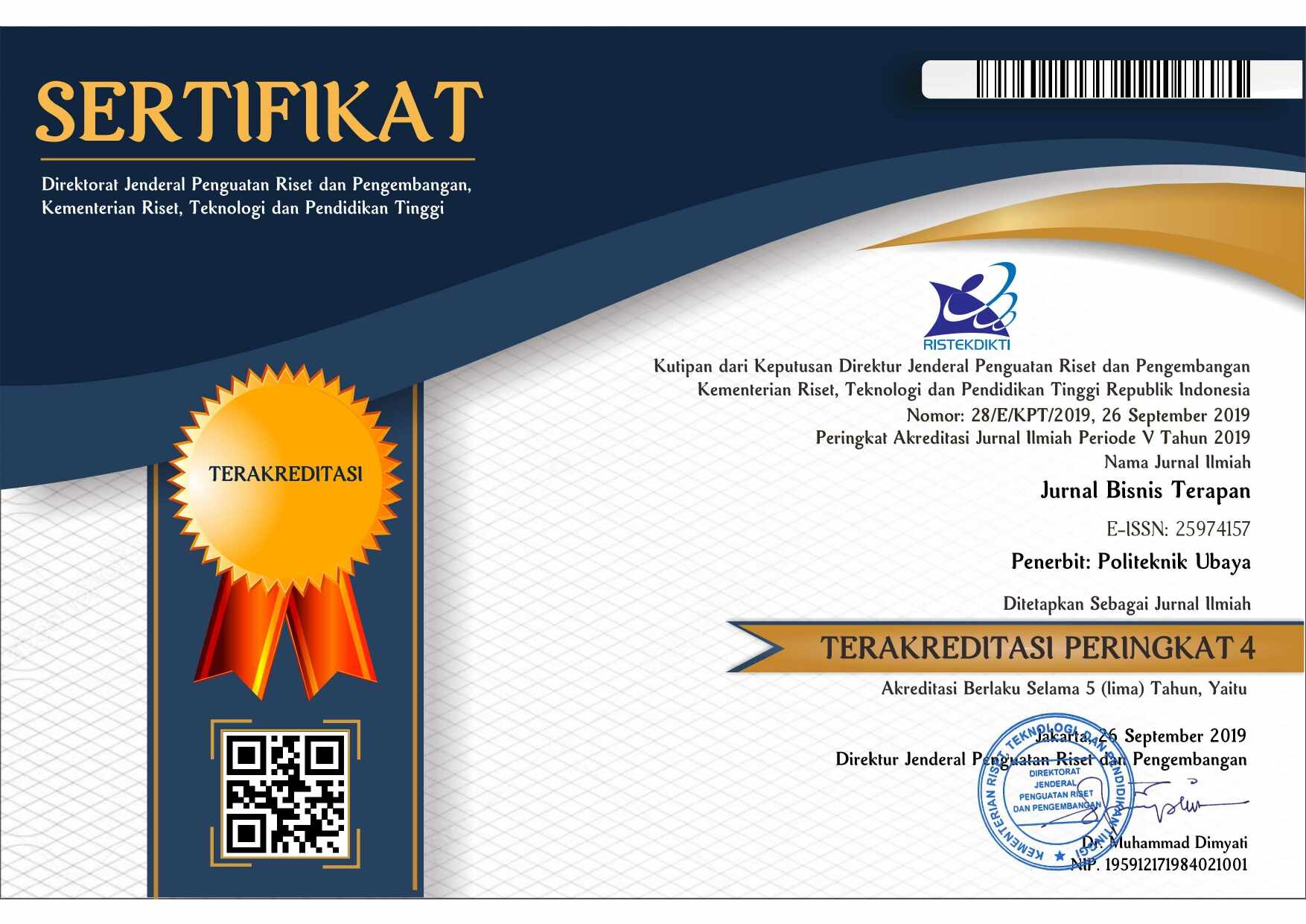PERAN LABEL HALAL DAN CITRA MEREK TERHADAP KEPUTUSAN PEMBELIAN PRODUK KOSMETIK WARDAH DI KOTA PALEMBANG
 Abstract Views:
1023 times
Abstract Views:
1023 times
 PDF Downloads:
902 times
PDF Downloads:
902 times
Abstract
Abstract
The cosmetic product sector in Indonesia is overgrowing. The increasing popularity of halal cosmetics has an impact on increasing the need for cosmetic products. Thus, various manufacturers from various brands offer advantages in terms of quality and benefits and a halal assurance to provide a sense of safety for consumption. This can stimulate purchasing decisions for these products based on these considerations from the various cosmetic products available in the market. Wardah is one cosmetic product company that prioritizes the halal brand image. The sample in this study was 110 samples. Data analysis in this research used the SPSS version 25 program. The halal label has a positive and substantial impact on purchasing decisions. The hypothesis test has an absolute value of 0.030, or lower than 0.05 and a regression coefficient of 0.158 (positive). Brand image has a positive and substantial impact on purchasing decisions. Testing the hypothesis obtained an absolute value of 0.001, or lower than 0.05 and a regression coefficient of -0.341 (negative). The results of this study show that the halal label variable (X1) has a positive and substantial impact on purchasing decisions (Y) for Wardah products in Palembang City.
Downloads
References
Aferonika, D., & Setiawn, M. B. (2021). the Influence of Lifestyle , Halal Label , and Price Perception on the Purchase Decision. Jurnal Ilmiah Manajemen, 10(1), 16–22.
Bai, F., & Qin, Y. (2016). The Implementation of Relationship Marketing and CRM : How to Become a Customer-Focused Organization. Journal of Business &Economic Policy, 3(2), 112–124.
Dowling, G. R. (1986). Perceived Risk: The Concept and its measurement. Psychology & Marketing, 3(3), 193–210. Retrieved from https://doi.org/10.1002/mar.4220030307
Fall Diallo, M., Chandon, J. L., Cliquet, G., & Philippe, J. (2013). Factors influencing consumer behaviour towards store brands: Evidence from the French market. International Journal of Retail & Distribution Management, 41(6), 422–441. https://doi.org/10.1108/09590551311330816
Halalmui.org. (2021). Tetap Cantik, Meski di Rumah Saja. Retrieved February 2, 2022, from https://www.halalmui.org/mui14/main/detail/tetap-cantik-meski-di-rumah-saja
Hidayat, R., & Resticha, D. (2019). Analisis Pengaruh Variasi Produk Dan Labelisasi Halal Terhadap Kepuasan Konsumen Untuk Meningkatkan Minat Beli Ulang Pada Kosmetik Wardah. Journal of Applied Business Administration, 3(1), 40–52. https://doi.org/10.30871/jaba.v3i1.1282
Hsin Chang, H., & Wang, H. W. (2011). The moderating effect of customer perceived value on online shopping behaviour. Online Information Review (Vol. 35). https://doi.org/10.1108/14684521111151414
Kotler, P., & Amstrong, G. (2008). Prinsip-Prinsip Pemasaran Jilid 1 (12th ed.). Jakarta: Erlangga.
Kotler, P., & Keller, K. L. (2009). Manajemen Pemasaran Jilid 2 (13th ed.). Jakarta: Erlangga.
Lau, K. C., & Phau, I. (2007). Extending Symbolic Brands Using Their Personality: Examining Antecedents and Implications Towards Brand Image Fit and Brand Dilution. Psychology & Marketing, 30(6), 421–444. https://doi.org/10.1002/mar
Lesmana, R., & Ayu, S. D. (2019). Pengaruh Kualitas Produk Dan Citra Merek Terhadap Keputusan Pembelian Kosmetik Wardah Pt Paragon Tehnology and Innovation. Jurnal Pemasaran Kompetitif, 2(3), 59. https://doi.org/10.32493/jpkpk.v2i3.2830
Mukharromah, G. L., & Rahmatika, R. (2020). The Effect of Halal Labels on Purchasing Decisions for Wardah Cosmetics of Students Islamic Building School of Jagad ’Alimussirry. Journal Intellectual Sufism Research (JISR), 3(1), 83–86. https://doi.org/10.52032/jisr.v3i1.93
Nugroho, S. (2008). Perilaku Konsumen (Ke 3). Jakarta: Kencana Prenada Media Group.
Nusaresearch. (2020). Make Up Routine. Retrieved November 8, 2022, from https://nusaresearch.net/public/news/996-Laporan_Tentang_Makeup_Routine.nsrs
Pavlou, Liang, & X. (2007). Understanding and Mitigating Understanding Online Exchange Relationships : Agent Perspective1 A Principal. MIS Quarterly, 31(1), 105–136.
Rakhi, H. (2019). Analisis Pengaruh Labelisasi Halal Terhadap Keputusan Pembelian Produk Kosmetik: Studi Kasus Kota Pontianak. ISLAMICONOMIC: Jurnal Ekonomi Islam, 10(1), 21–38. https://doi.org/10.32678/ijei.v10i1.119
Rangkuti, F. (2011). Riset Pemasaran. Jakarta: Gramedia Pustaka Utama.
Rubio, N., Oubiña, J., & Villaseñor, N. (2014). Brand awareness-Brand quality inference and consumer’s risk perception in store brands of food products. Food Quality and Preference, 32(PC), 289–298. https://doi.org/10.1016/j.foodqual.2013.09.006
Simamora, H. (2000). Manajemen Pemasaran Internasional (Jilid 1). Jakarta: Salemba Empat.
Simarmata, W. (2020). Pengaruh Kualitas Produk Dan Citra Merek Terhadap Kepuasan Konsumen. JOM FIsip, 7(2).
www.digimind.id. (2020). Data Produk Kecantikan Terlaris di E-Commerce.
www.statista.com. (2021). Cosmetics and personal care market in Indonesia - statistics & facts. Retrieved February 2, 2022, from https://www.statista.com/topics/7592/cosmetics-and-personal-care-market-in-indonesia/


This work is licensed under a Creative Commons Attribution-NonCommercial-ShareAlike 4.0 International License.

Ciptaan disebarluaskan di bawah Lisensi Creative Commons Atribusi-NonKomersial-BerbagiSerupa 4.0 Internasional.
-
Articles published in Jurnal Bisnis Terapan are licensed under a Creative Commons Attribution-NonCommercial-ShareAlike 4.0 International (CC BY-NC-SA 4.0) license, which permits anyone to copy, transform, or redistribute articles for any lawful purpose in any medium, provided appropriate credit is given to the original author(s) and Jurnal Bisnis Terapan is recognized as its original publisher. A link to this license should also be provided. Any derivative work of an article published in Jurnal Bisnis Terapan must also be shared under the same (or compatible) license.
-
Both copyright and publishing rights on articles are retained by the respective author(s), without restrictions. Only a non-exclusive license is granted to Jurnal Bisnis Terapan to publish the article and identify itself as its original publisher.

 DOI:
DOI:






